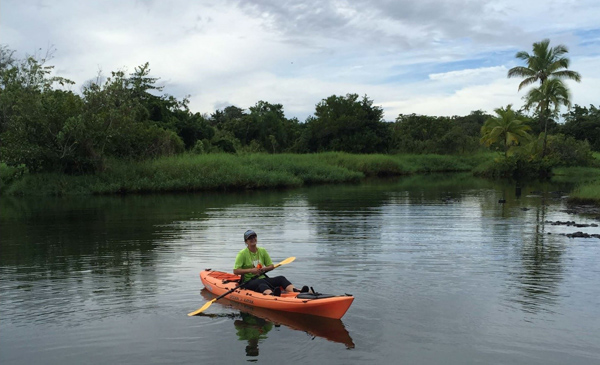
Loko i‘a or fish ponds are a traditional form of Hawaiian aquaculture. Each loko i‘a has a unique character, depending on its location (i.e. ocean proximity), size, and groundwater source. Combining aspects of the natural and built environment, as well as fresh and salt water, these loko i‘a are valuable culturally and ecologically. Because these ponds rely on natural nutrient inputs, their productivity is sensitive to changes in fresh groundwater inputs and ocean dynamics. On Hawai‘i Island, the groundwater flow to the oceans is 20 times greater than river flow, so the vast majority of freshwater input to estuarine ecosystems is somewhat hidden. It is important to better understand the water and nutrient movement into and around these fish ponds so that both loko i‘a and naturally occurring groundwater dependent systems can be sustainably managed in ways that anticipate climate change adaptation.
To determine how the hydrology and nutrient fluxes of the loko i‘a change over time and in response to tides and precipitation, we have collected a robust set of water quality data from both shoreline stations and long-term dataloggers deployed in the fish ponds. We also mapped the geography and bathymetry of our three chosen fish ponds. This comprehensive dataset includes periods of king tides, drought, and intense rainfall, all conditions which provide views into a possible future for these fishponds as sea level rises and weather patterns shift. In addition, we have interviewed fish pond managers to determine what their needs are regarding information about the hydrology and primary production of their ponds, and helped them develop a workflow to visualize their data using Kibana Dashboard. Combining these powerful trend analysis tools with the extensive place-based experience of the managers opens up exciting new possibilities for restoration and management of the loko i‘a.
This project is part of a larger effort involving the UH system, Conservation International Hawai‘i, the Edith Kanaka‘ole Foundation, Kamehameha Schools, and the Hawai‘i Department of Aquatic Resources. Because there are many groups involved in loko i‘a restoration and maintainance, these combined efforts are a vital way to increase our understanding of groundwater dependent ecosystems on a larger scale and benefit the entire community. By combining robust scientific data collection, advanced data analysis and visualization, and strong community engagement, these loko i‘a may one day be restored to full functionality and serve as a model for fish pond restoration and management on other islands.

